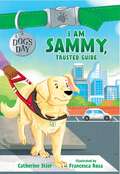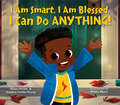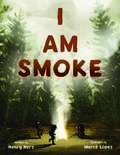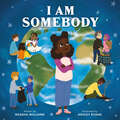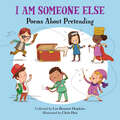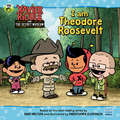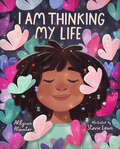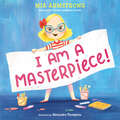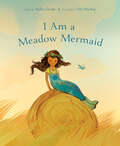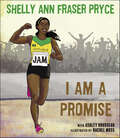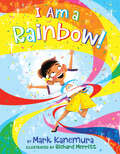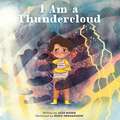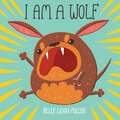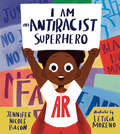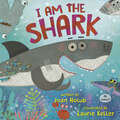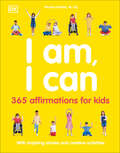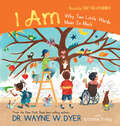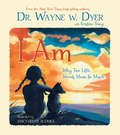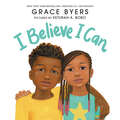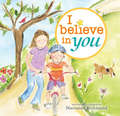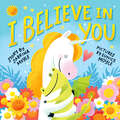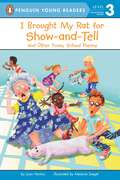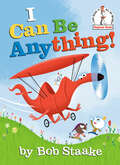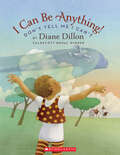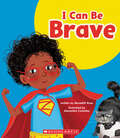- Table View
- List View
I Am Sammy, Trusted Guide (A Dog's Day #3)
by Catherine Stier Francesca RosaSpend a day in the life of a guide dog! Sammy the golden retriever has a big job. Because his owner is visually impaired, Sammy needs to keep a constant watch of their surroundings. And in the city, there is a lot to notice―and a lot of potential distractions too. <p><p>Told from the dog’s perspective, this story also includes back matter about the breed and role of the working dog.
I Am Smart, I Am Blessed, I Can Do Anything!
by Alissa Holder Zulekha Holder-YoungBased on a viral video comes the story of one boy's positive energy and how a sunny outlook can turn everything around.It's a new day and Ayaan has woken up on the wrong side of the bed, where nothing feels quite right. What if he doesn't know the answer at school? What if he messes up? But as he sets out that morning, all it takes is a few reminders from his mom and some friends in the neighborhood to remind him that a new day is a good day because...HE IS SMART,HE IS BLESSED,AND HE CAN DO ANYTHING!
I Am Smoke
by Henry Herz“Wowww!”—– Raina Telgemeier, #1 NY Times, #1 USA Today, #1 Publishers Weekly bestselling author/illustrator “Herz presents a provocative and unique look at the lifecycle and benefits of smoke throughout the millennia. Lopez’s multimedia artwork further illuminates the ethereal nature of smoke as it drifts and dances across the page.”- John Rocco, NY Times Bestselling author and Caldecott Honoree "A fascinating, refreshing, and beautifully atmospheric take on something often taken for granted. I’ll never look at smoke the same way again!"- Matthew Cordell, Caldecott Medalist author/illustrator “I Am Smoke is an absolutely beautiful book, where smoke is both poetry and science. Readers will rest, float, and dance along with smoke’s quiet power across time and traditions. I have lingered over its pages more than once, and I’m sure young readers will, too.”- NY Times Bestselling author Doreen Cronin Smoke itself acts as narrator, telling us how it has served humankind since prehistoric times in signaling, beekeeping, curing and flavoring food, religious rites, fumigating insects, and myriad other ways. Smoke speaks in mesmerizing riddles: “I lack a mouth, but I can speak…. I lack hands, but I can push out unwanted guests…. I’m gentler than a feather, but I can cause harm…". This rhythmically powerful narration is complemented by illustrations in which swirling smoke was captured on art paper held over smoky candle flames, and the dancing smoke textures were then deepened and elaborated with watercolors and Photoshop finishes. With this unique method, Merce López “let the smoke decide how the idea I had in mind would dance with it, giving freedom to the images.” The resulting illustrations are astounding, and they resonate with the otherworldly text.
I Am Somebody
by Nyasha WilliamsAn empowering picture book about the importance of stepping up (and speaking up) to address injustice and effect change within our daily lives, from the author of I Affirm Me: The ABCs of Inspiration for Black Kids.I Am Somebody takes the reader on a journey over the course of a day, as our main character notices various forms of neglect and injustice—from trash on the sidewalk and students butting in line waiting for the bus, to not sharing on the playground and bullying about food. In each instance, the young child remarks that SOMEBODY should do something to remedy the situation(s) until, eventually, they realize that they are the person that can effect change. This powerful story reminds us that every living thing is unique and should be treated with kindness and respect and that we are ALL &“somebody.&”
I Am Someone Else: Poems About Pretending
by Chris HsuCelebrated poet Lee Bennett Hopkins shares a diverse collection of poems that ask (with the help of Newbery medalist Lois Lowry, former US Children's Poet Laureate J. Patrick Lewis, and others), "Who do you want to be?"Kids can imagine pretending and dressing up in this playful poetry collection, flexing their creative muscles and bucking stereotypes. (Who says that girls can't be knights and boys can't be mermaids?) Fifteen poets write about who they might like to be, musing what life would be like as a wizard, a firefighter, a video-game inventor, and more. "There is nothing better than being yourself. You are unique and special in every way. Once in a while it might be fun to think about becoming someone (or something!) else. Who would you like to be? Imagine that you're someone else!" --Lee Bennett Hopkins
I Am Theodore Roosevelt (Xavier Riddle and the Secret Museum)
by Brooke VitaleAn 8x8 based on an episode from the PBS KIDS animated television series Xavier Riddle and the Secret Museum starring Theodore Roosevelt.Based on the children's book series Ordinary People Change the World by New York Times bestselling author Brad Meltzer and illustrator Christopher Eliopoulos, the series will introduce kids to inspiring historical figures and the character virtues that helped them succeed. Brad does not like creepy crawly things and has marked the entire playground as a No-Go Zone! The Secret Museum sends him, Xavier, and Yadina to meet Theodore Roosevelt who helps them learn that creepy crawly things need space to live, too. This episode-based 8x8 will focus on the traits that made our heroes great--the traits that kids can aspire to in order to live heroically themselves.
I Am Thinking My Life
by Allysun AtwaterI am the architect of my dreams.I am sculpting my world. I am clay. I am motion. I am light. I am what I think.Bursting with imagination, this ode to positive thought demonstrates a young girl&’s ability to use the power of her mind to transform her world. (Ages 3–7)I Am Thinking My Life illustrates how the power of positive thinking can be the secret to manifesting hopes and dreams over time.An imaginative little girl thinks inspired thoughts, envisions positive actions, and engages in creative activities as she unveils the secret connection between her thoughts, dreams, and actions. Her visions of her future unfold in brilliant, heartwarming illustrations.A child&’s first person look at manifestation, affirmations, and the law of attraction, this encouraging picture book will help children build confidence and self-esteem, while still acknowledging that there will be obstacles and storms in life that must be weathered. Filled with positive affirmations and an encouraging message about the role positivity and mindfulness play in bringing hopes and dreams to fruition, I Am Thinking My Life makes a wonderful gift, and will appeal to children and adults alike.
I Am a Masterpiece!: An Empowering Story About Inclusivity and Growing Up with Down Syndrome
by Mia ArmstrongTween actress Mia Armstrong celebrates her fun, funny, beautiful childhood living with Down syndrome in this debut picture book. Mia likes many of the things other people like--going to the beach, the color blue, drawing. But she doesn't like when strangers stare at her because she looks different from them. Down syndrome allows Mia to see and understand the world in a way that may not make sense to others. She considers it her superpower--and instead of it making her strange, she considers herself a masterpiece. As we all are. In this sparkling picture book, Mia offers a glimpse into the life of a child with Down syndrome, helping some readers see themselves in a book and helping others understand those friends, classmates, and family members who are neurodivergent.
I Am a Meadow Mermaid
by Kallie GeorgeA farm girl with a big imagination turns her landlocked home into an ocean playground in this dreamy picture book for little mermaids everywhere.A little girl dreams of adventures in the water and feels the spirit of the ocean all around her . . . even though she lives on the prairie, with flat land as far as the eye can see. But she won't let a little detail like that stand in the way of being a meadow mermaid! Frolicking in the "waves" of wheat and "oceans" of grass, spying sea horses and . . . a shipwrecked sailor? Even if that shipwreck is actually an overturned bike and the sailor a new kid from a neighboring field, it's still a chance to make a new friend, one with an imagination as expansive and a love of the ocean as deep as the little girl's own.This fanciful, whimsical picture book will charm young mermaids and little pirates everywhere, and inspire them to embrace the spirit of the ocean in the things around them, no matter where they live!
I Am a Promise
by Ashley Rousseau Shelly Ann PryceAn inspiring children's picture book about the indomitable spirit of Jamaican eight-time Olympic medal winner Shelly Ann Fraser Pryce.“A colorful children’s book, chock full of vividly wonderful, bright and brilliant illustrations by Rachel Moss.” —Exclusive MagazineI Am a Promise takes readers on Shelly Ann’s journey from her childhood in the tough inner-city community of Waterhouse in Kingston, Jamaica, through her development as a young athlete, to her first Olympic gold medal in the 100-meter sprint in 2008.The story charts how Shelly Ann’s commitment to hard work as well as the encouragement of loved ones helped her achieve her dreams against great odds and challenging life experiences. Most importantly, I Am a Promise encourages young readers to believe in themselves and to maximize their own promise to the world.
I Am a Rainbow!
by Mark KanemuraA professional dancer, LGBTQIA+ advocate, and social media star shares this inspiring picture book based on his childhood in Hawaii and encourages readers to find safe spaces that allow them to shine bright. Mark loves putting on shows, dressing up, and dancing! But what makes him happy at home gets him teased at school. To remind Mark that his unique light makes the world a brighter place, his parents surprise him with a beautiful, flowing cape. Wearing it, he feels invincible and free to shine all over Honolulu! It even gives him the courage to befriend some kids who are just as colorful as he is. When the cape goes missing, Mark loses his new confidence. How will he ever shine again? Mark's relatable, real-life inspired story paired with Richard Merritt's bright and energetic illustrations is a celebration of self-acceptance.
I Am a Thundercloud
by Leah MoserBig feelings are hard to manage, especially when you&’re a small person trying to understand yourself and the world. For those confusing stormy days, I Am a Thundercloud helps readers relate to their feelings through the sounds, sensations and colors of nature, making them feel comfortable and lighter. Having emotions, even angry ones, is a part of being human. In Leah Moser&’s I Am a Thundercloud a young child is having a bad day—they BOOM, ROAR, CRASH, and CRACKLE like an angry thundercloud. Tense body language, an inability to say the &“right&” words, the instinct to hide are like a brewing storm within the child. But like the sun breaking through, our protagonist processes big emotions by relaxing, asking for help, opening up, and pausing to permit themselves to breathe. This powerful picture book reminds us that having the ability to recognize how we are feeling not only increases our emotional intelligence and helps us process our own emotions, but it also allows us to recognize and empathize with others who are struggling with their emotions.
I Am a Wolf
by Kelly Leigh MillerA dog who insists she's a wolf finds the perfect home with a young girl who sees past her prickly personality in this pet adoption story that's as laugh-out-loud funny as it is heart-tugging.When a particularly growly pup finds herself in an animal shelter, she insists that she is a wolf--a lone wolf. After all, she's not sweet, she's not cute, and she is just fine on her own! Luckily, there's one little girl at the shelter who knows that sometimes, good dogs act bad when they feel afraid and that extending a little kindness can help even the most wolfish pup at the pound let down her guard.
I Am an Antiracist Superhero: With Activities to Help You Be One Too!
by Jennifer Nicole BaconThis empowering story inspires kids from all backgrounds to Look, Listen, Feel, and Act like antiracist superheroes, even in times of adversity (ages 4–8).This book tells the story of 6-year-old Malik, who after learning about racism in the wake of the murder of George Floyd, decides to change the world by becoming an antiracist superhero. With the help of his parents, and inspiration from historical figures like Rosa Parks and James Baldwin, Malik learns that even when he feels scared, he can still be a superhero by Looking, Listening, Feeling, and Acting! Join Malik and his friends as they help other children feel safe, included, and empowered. Inviting children from all backgrounds to become superheroes, this touching story provides inspiration for children when faced with adversity. The book also includes a practical section including a glossary of relevant terms, as well as hands-on guided activities and practices (like creating a vision board and drawing their superpowers) that kids can do so that they can change the world around them by Looking, Listening, Feeling, and Acting like an antiracist superhero too!
I Am the Shark
by Joan HolubWhat makes the great white shark (one of) the greatest fish in the sea? FIN-d out in this hilarious fish-out-of-water story that's perfect for Shark Week and all year-round!"Don't miss this one." -School Library Journal, Starred Review Hi! I am Great White Shark, and if you get this book, you'll read all about ME--the greatest shark in the sea!Not so fast! Greenland Shark here, and as the oldest shark in this book, that makes me the greatest. Did someone say fast? I'm Mako Shark, and I'm the fastest shark in this book! Eat my bubbles!Wow, I'm Hammerhead Shark. You don't need my special eyes to see that there are lots of great sharks in this book. Sink your teeth into it now!New York Times bestselling author Joan Holub makes a splash with bestselling illustrator Laurie Keller to deliver an entertaining undersea story filled with the greatest shark facts in the ocean!
I Am, I Can: 365 affirmations for kids (Mindfulness for Kids)
by DK Wynne KinderI am strong. I am brave. I can handle anything. This book empowers your child by providing an affirmation for every single day of the year. With a different theme for each month – such as positivity, calm, and adventure – children can build their self-esteem and resilience by focusing on what matters to them, through the power of positive thinking.Perfect for children aged 7 to 9, this book not only educates but inspires. Affirmations tied to certain key events from history provide motivation and encouragement. On 17th April, learn about the Apollo 13 mission and discover how to stay calm under pressure. On 1st December, Rosa Parks&’ refusal to give up her seat on the bus links to the affirmation &“I stand up for myself and others.&” Mindful activities encourage children to try practical techniques to explore the affirmations further – creating a &“happiness jar&” helps kids come up with their own affirmations, building a &“coping wheel&” empowers kids to manage stress, and making friendship bracelets helps enact the affirmation &“I am a caring friend.&”Affirmations have been proven to help overcome negative thoughts by reminding us of what matters. I Am, I Can use beautiful illustrations to bring the daily doses of wisdom to life and encourage visualization – a powerful tool in promoting self-belief and keeping anxiety at bay.
I Am: Why Two Little Words Mean So Much
by Dr. Wayne W. DyerI AM, the newest children&’s book by Dr. Wayne W. Dyer, is taken from his latest book for adults, Wishes Fulfilled. I AM teaches kids a simple but profound message: God is not far off in the distance, or even merely beside us. In other words, we are not separate from God—we are God! Knowing that God&’s love and strength is a part of everyone can help kids grow to meet their greatest potential in life. The book uses a rhyme and illustrations to teach this lesson and help children realize that they are greater than they ever imagined! There is also a special section at the end that teaches the important meaning and way to use the words I am to create love, happiness, and greatness in their own lives and the world
I Am: Why Two Little Words Mean So Much
by Wayne W. DyerI AM, the newest children's book by Dr. Wayne W. Dyer, is taken from his latest book for adults, Wishes Fulfilled.I AM teaches kids a simple but profound message: God is not far off in the distance, or even merely beside us. In other words, we are not separate from God-we are God! Knowing that God's love and strength is a part of everyone can help kids grow to meet their greatest potential in life. The book uses a rhyme and illustrations to teach this lesson and help children realize that they are greater than they ever imagined! There is also a special section at the end that teaches the important meaning and way to use the words I am to create love, happiness, and greatness in their own lives and the world
I Believe I Can
by Grace ByersFrom the #1 New York Times bestselling creators of I Am Enough comes an empowering follow-up that celebrates every child’s limitless potential.I Believe I Can is an affirmation for boys and girls of every background to love and believe in themselves. Actress and activist Grace Byers and artist Keturah A. Bobo return with another gorgeously illustrated new classic that’s the perfect gift for baby showers, birthdays, or just for reading at home again and again.My presence matters in this world. I know I can do anything, if only I believe I can.
I Believe in You
by Marianne RichmondThe follow-up to the hugely successful If I Could Keep You Little (100,000 in print), I Believe in You showcases the spirit of a parent who is on a child's team no matter what. From a beloved bestselling author who has touched the lives of millions, Marianne's evocative text and beautiful illustrations will speak straight to a parent's heart, exploring that feeling of unwavering support. Sure to become a new fan favorite, I Believe in You evocatively portrays the complex and tender emotions all parents have for their children.
I Believe in You (Hello!Lucky)
by Sabrina MoyleA picture book for children that brings together the confidence-building of The Kissing Hand and the inspiration of Oh, the Places You'll Go! Plus unicorns!
I Brought My Rat for Show-and-Tell: And Other Funny School Poems (Penguin Young Readers, Level 3)
by Joan HortonYou don't bring your rat to show-and-tell. You do mouth off to the class bully, but only when you're safe at home in bed. These are just some of the lessons to be learned in this hilarious collection of school poems-guaranteed to tickle any kid's funny bone!
I Can Be Anything! (Beginner Books(R))
by Bob StaakeA shape-shifting lizard becomes anything he wants in this funny--and empowering--Beginner Book by award-winning illustrator Bob Staake!The giant lizard star of Bob Staake's Beginner Book Can You See Me? is back--and this time, instead of changing colors, he's changing shapes. (Very un-lizard-like shapes, including a robot on a dairy cow, a surfboard for a whale, and a one-eyed, green-headed monster!) Featuring simple rhymed text and high-energy graphic-style illustrations, this cheerful, funny easy reader is exactly what Dr. Seuss had in mind when he launched the Beginner Books series in 1957 with The Cat in the Hat. What's more, Staake's charming lizard shares an empowering "You can do it!" message with young readers.
I Can Be Anything! Don't Tell Me I Can't: Don't Tell Me I Can't
by Diane DillonGirl power! Two-time Caldecott Medalist Diane Dillon sends tigers and dinosaurs leaping off the pages as 5-year-old Zoe declares she can be anything: an archaeologist, vet, U.S. president, and more.Like most girls and boys, Zoe enthusiastically embraces the wonders of our world and its infinite possibilities. "I can be anything I want to be!" she tells us, presenting herself in a range of careers. "But what if you fail?" asks a voice of doubt that attempts to undermine her confidence.Bold and sassy, Zoe swats the voice away at every turn, declaring her certainty with a charisma that will encourage us all to silence the fears projected onto us by our world. Why can't a girl grow up to be President? Zoe can! When the voice of doubt continues, Zoe knows exactly what to say: "Go away, voice... I can be anything... but first, I have to learn to read. And don't tell me I can't!" Award-winner Diane Dillon has created a winning character who defies anything to hold her back from achieving her goals. And the key to Zoe's future success begins when Zoe defiantly opens her book, making it clear that both confidence and reading are tools we all need to make our dreams come true.
I Can Be Brave (Learn About)
by Meredith RusuLearn all about positive behavior and meet your best self!"I can be brave when I try a new vegetable, like eggplant. I can be brave by telling the truth, even if I might get in trouble."This is Bob, and he wants to share with you what it means for him to be brave. You will see that, when he works hard to be brave, he feels big and strong. It's hissuperpower!ABOUT THE SERIES:Learning social skills is a key element of early childhood development and in helping kids develop a healthy identity. These relatable stories in familiar settings explore some of the most important social/emotional needs of young children, encouraging them to recognize, understand, express, and navigate various emotions and situations they might experience every day at school and at home. From being brave, honest, and kind, to being good friends, these books will help readers meet their best self!
